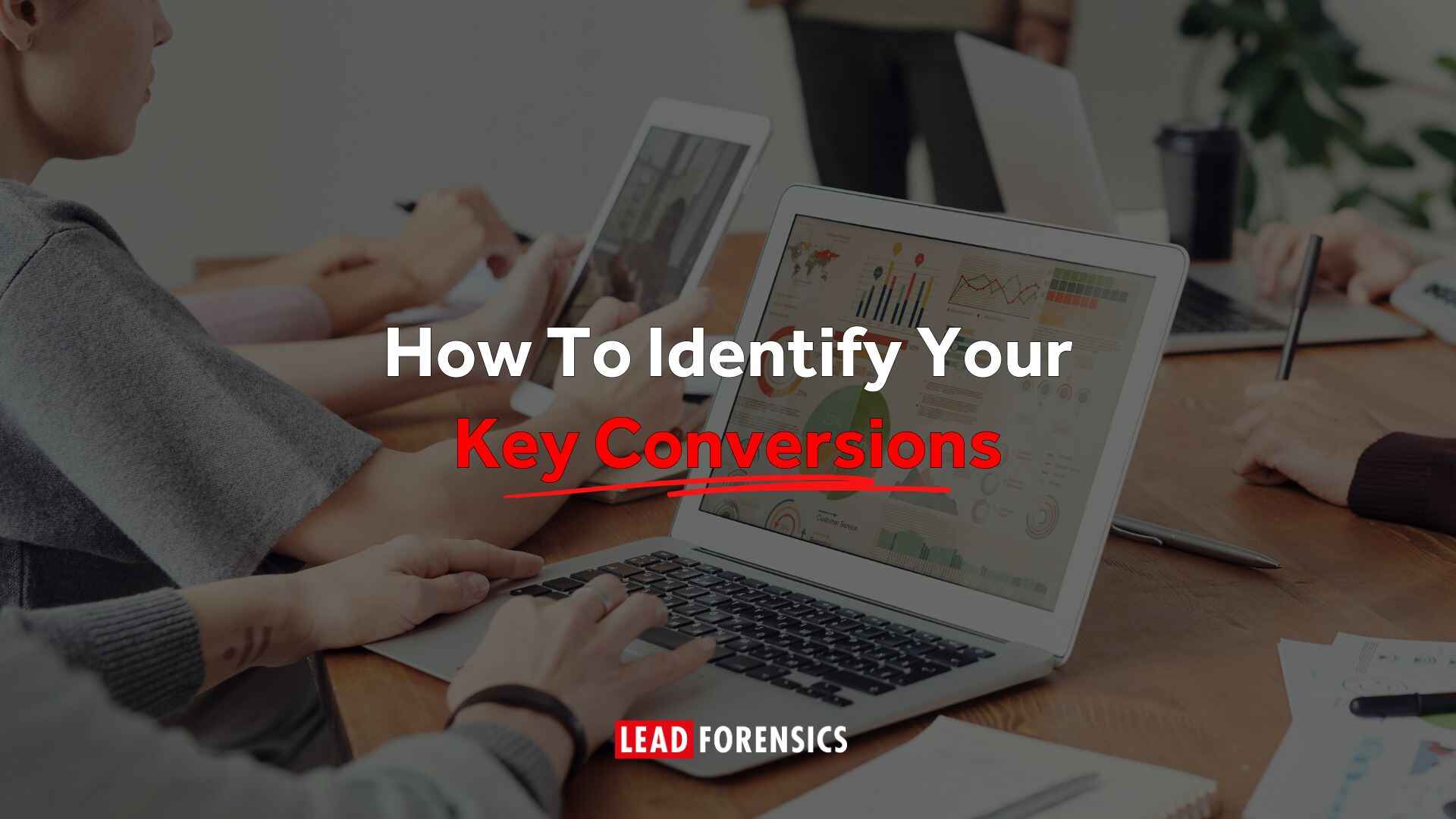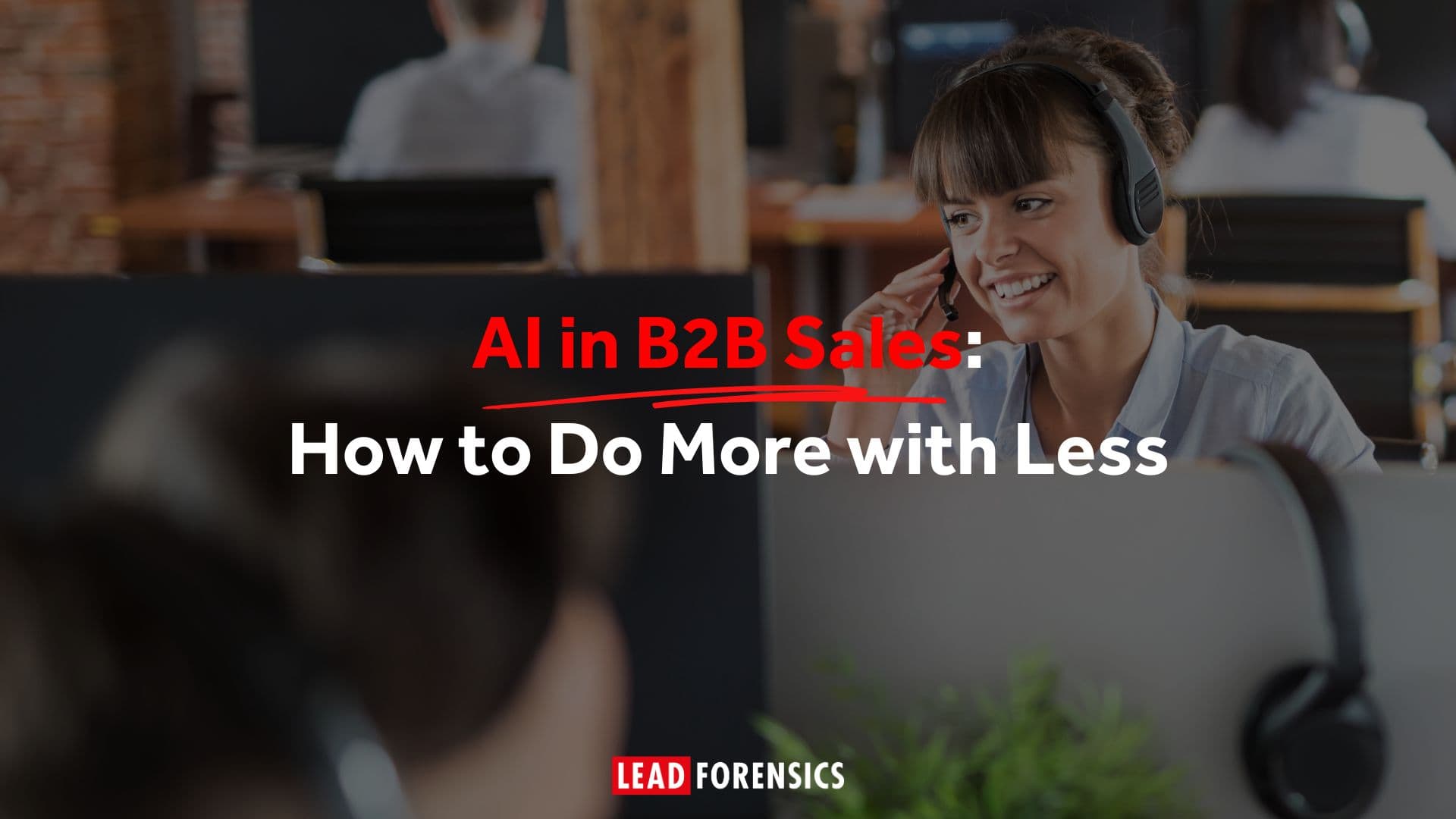Look at How Customers Behave on Your website
Website analytics tools will give you insights into how people behave on your website.
For example, GA4 can show you how many visitors have landed on your site after clicking on a specific campaign, email or PPC advert, and help you analyze their behavior as they move through your site.
But you can’t get any insight into which companies those visitors from.
Website identification tools like Lead Forensics, can tell you which companies your visitors work for and what they do while browsing your website. This gives you a deeper level of industry insight that’s ideal for the B2B industry.
The key things you want to find out are:
- What does the average user journey look like? What pages do they land on, and which ones do they visit next?
- What pages do they visit before converting?
- How many people drop off at each stage of the journey?
- What are the highest exit pages on your site?
Think About Your Website Conversions
When you’ve got your user journey mapped, it’s time to think about all the conversions a prospect could make on their way to becoming a customer.
It’s a good idea to split these into macro and micro conversions, so you can give the appropriate level of attention to each type. Your macro conversions are probably obvious; these will be high-level actions like booking a demo or requesting more information.
Micro conversions can be harder to spot. It might be as simple as someone clicking from one page to the next, watching an embedded video or subscribing to a newsletter.
A good tip for identifying all these conversions is to take yourself through the user journey you identified and observe what actions you take. You could ask your colleagues to do the same as you view their screen – or use tools like Hotjar to capture heatmaps or session recordings and watch how genuine visitors use your website.
Consider Your Measurable Metrics
Conversion rate is the fourth most important metric for marketers and almost one in three measures this, according to research by HubSpot. But what metrics should you focus on? That depends on what your macro and micro conversions are.
The following metrics are often useful for looking at your conversions:
- Conversion rate measures the percentage of sessions that completed a specific conversion action
- User conversion rate measures the percentage of users that completed a specified conversion action
- Click-through rate measures the percentage of users that click on a specific link or call-to-action
- Bounce rate measures the percentage of users that leave your site after viewing just one page
- Average session duration measures the average amount of time that users spend on your website
- Customer acquisition cost measures the total cost of acquiring a new customer
However, most of these metrics only work if you’ve already told your analytics tool what you consider to be a conversion.
In GA4, that means setting up events for specific actions and then marking the most important ones as key events.
Work Out Your Own Conversion Rate
You’ve looked at your analytics data, thought about what’s considered a conversion and even decided what metrics you want to measure – but how do you bring all this together to find out your own conversion rate?
There’s a tried and tested four-step process you can follow:
- Define your conversions and what they actually mean. For example, why does that specific click matter or what’s so important about making sure users reach a certain page? This focuses your attention and gives you a practical document that anyone in the business can use to understand conversions better.
- Start tracking conversions. In GA4, you can turn any of the default tracked events into conversions by simply marking them as such in the events admin panel. Without this essential step, you can’t accurately measure performance.
- Collect data. You can’t retroactively report on conversions, so you’ll need to give your site time to populate your web analytics tool with data.
- Analyze data. Segment your new conversion rates any way you need to, whether that’s by landing page, acquisition source, event conversions, etc., to get an understanding of what’s really happening on your site.
Compare This To Your Industry
Take a look at the average B2B conversion rate for your industry so you can benchmark yourself against your peers. This will give you a sense of how well you might be doing – or how much opportunity there is for you to improve.
But remember, the averages aren’t anywhere near as useful as the actual data you derive from your own website and business intelligence.
Start Optimizing for Conversions
You’re ready to begin your CRO journey. That means thinking about your goals, prioritizing your pages, planning your CRO test, executing your experiment and implementing the winning changes.
Not sure how to get started? Download our free Conversion Rate Optimization Playbook. It outlines all these steps, and it has a list of 7 quick CRO wins you can try if you’re stuck for ideas.










